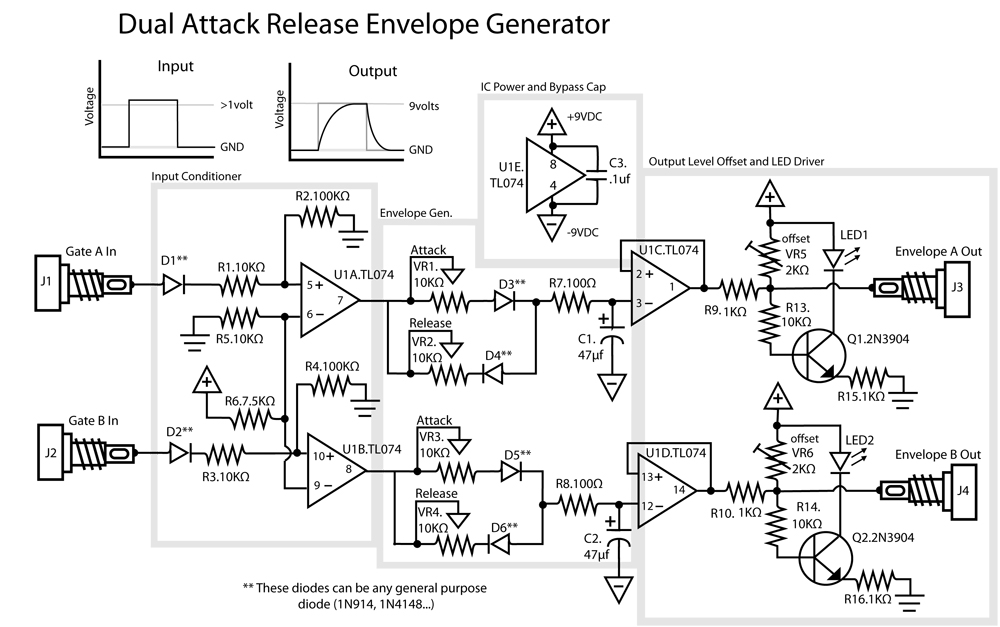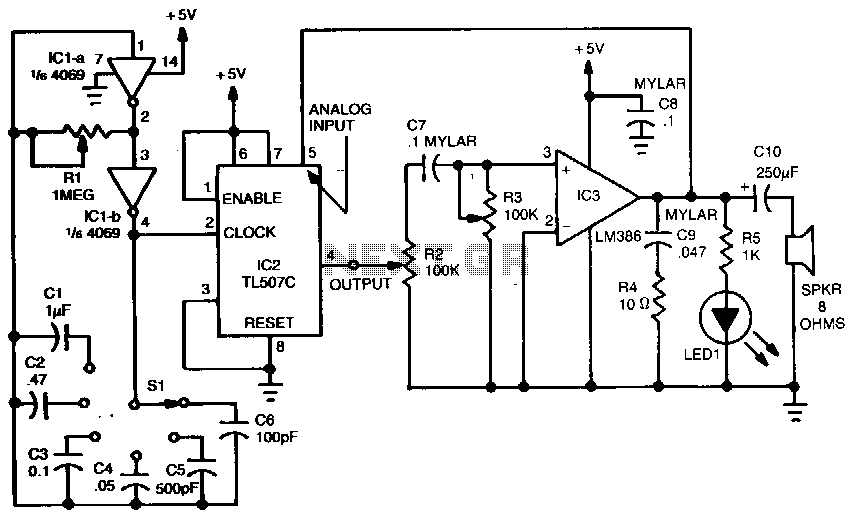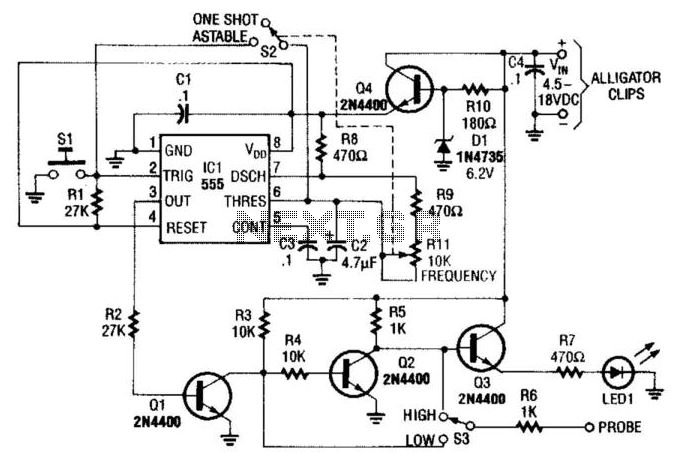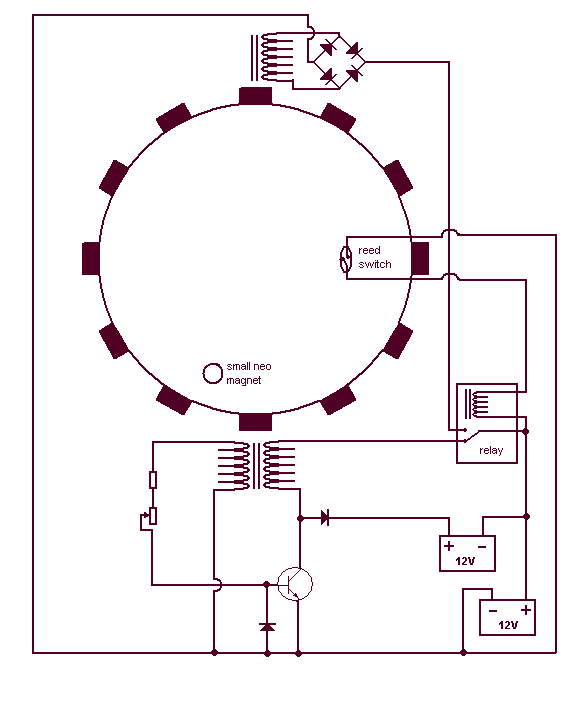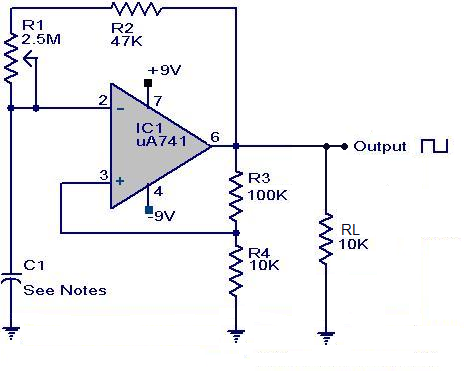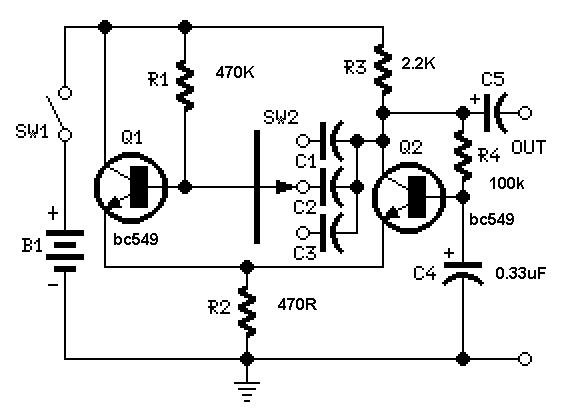
Square-Wave Generator
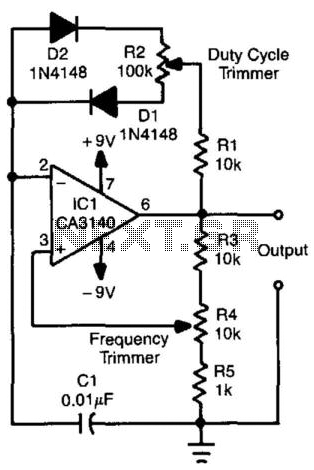
This relaxation oscillator circuit utilizes diodes to create charge and discharge paths for capacitor CI. The duty cycle is determined by resistor R2, while the frequency is controlled by resistor R4. The value of capacitor CI can be adjusted to modify the frequency range, which in this circuit is approximately 300 to 3000 Hz.
The relaxation oscillator circuit operates by alternately charging and discharging a capacitor, producing a square wave output. The diodes in the circuit play a crucial role in directing the current flow during the charge and discharge cycles. When the capacitor CI charges through resistor R4, it accumulates voltage until it reaches a predefined threshold. At this point, the diodes allow the capacitor to discharge rapidly, creating a pulse. The cycle then repeats, resulting in a continuous oscillation.
The duty cycle, defined as the ratio of the time the output is high to the total period of the waveform, is influenced by the resistance value of R2. A higher resistance will increase the time it takes for the capacitor to charge, thereby increasing the duty cycle. Conversely, a lower resistance will result in a shorter charging time, decreasing the duty cycle.
The frequency of oscillation is primarily determined by the RC time constant, which is a product of the resistance (R4) and capacitance (CI). By varying R4, the frequency can be adjusted within the specified range of 300 to 3000 Hz. Additionally, changing CI allows for further tuning of the frequency, providing flexibility in applications where precise timing is necessary.
This type of oscillator is commonly used in applications such as audio signal generation, timer circuits, and various other electronic devices that require a stable oscillating signal. Proper selection of components is essential to achieve the desired performance characteristics, including stability, frequency accuracy, and duty cycle. This relaxation oscillator circuit uses diodes to produce charge and discharge paths for CI. The duty cycle is set vi a R2 and the frequency via R4. CI can be varied to vary the frequency range, which, for this circuit is approximately 300 to 3000 Hz. 🔗 External reference
The relaxation oscillator circuit operates by alternately charging and discharging a capacitor, producing a square wave output. The diodes in the circuit play a crucial role in directing the current flow during the charge and discharge cycles. When the capacitor CI charges through resistor R4, it accumulates voltage until it reaches a predefined threshold. At this point, the diodes allow the capacitor to discharge rapidly, creating a pulse. The cycle then repeats, resulting in a continuous oscillation.
The duty cycle, defined as the ratio of the time the output is high to the total period of the waveform, is influenced by the resistance value of R2. A higher resistance will increase the time it takes for the capacitor to charge, thereby increasing the duty cycle. Conversely, a lower resistance will result in a shorter charging time, decreasing the duty cycle.
The frequency of oscillation is primarily determined by the RC time constant, which is a product of the resistance (R4) and capacitance (CI). By varying R4, the frequency can be adjusted within the specified range of 300 to 3000 Hz. Additionally, changing CI allows for further tuning of the frequency, providing flexibility in applications where precise timing is necessary.
This type of oscillator is commonly used in applications such as audio signal generation, timer circuits, and various other electronic devices that require a stable oscillating signal. Proper selection of components is essential to achieve the desired performance characteristics, including stability, frequency accuracy, and duty cycle. This relaxation oscillator circuit uses diodes to produce charge and discharge paths for CI. The duty cycle is set vi a R2 and the frequency via R4. CI can be varied to vary the frequency range, which, for this circuit is approximately 300 to 3000 Hz. 🔗 External reference
